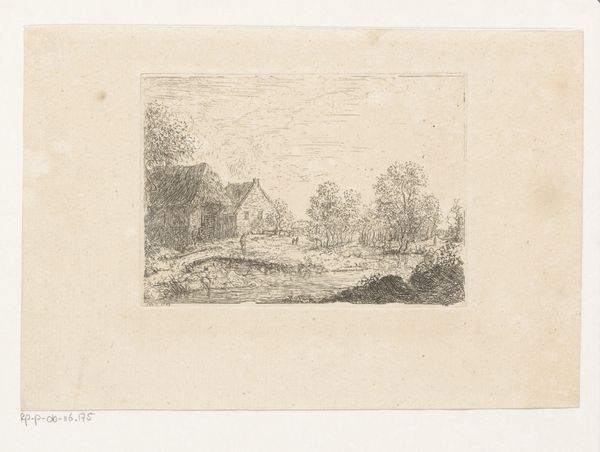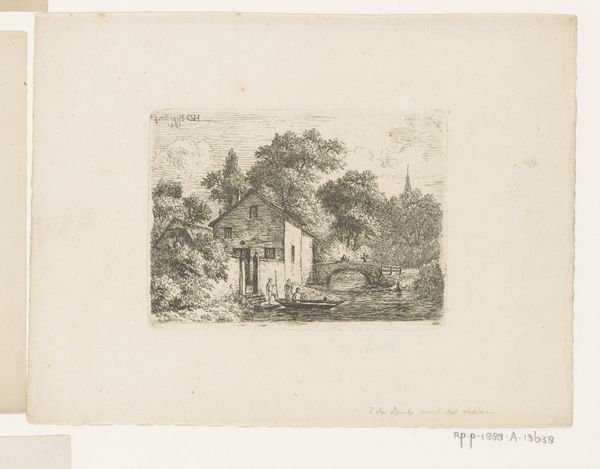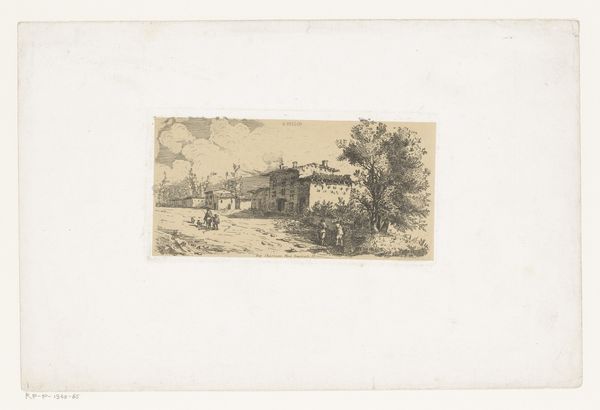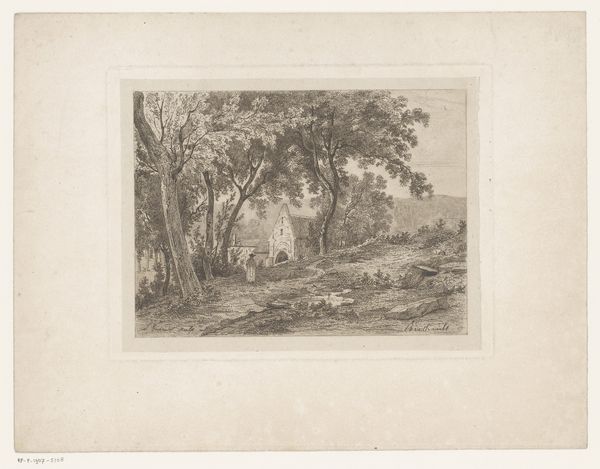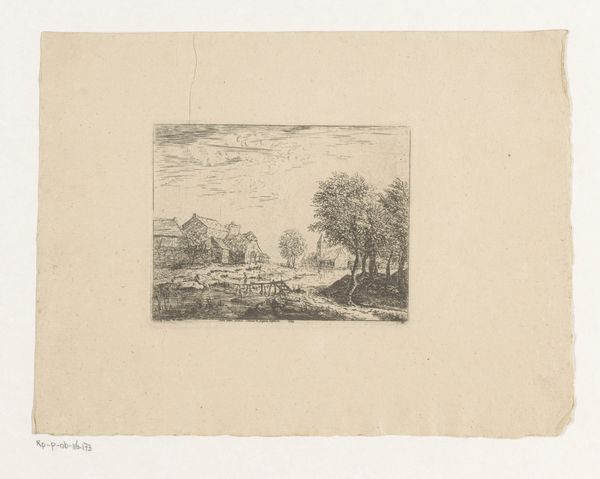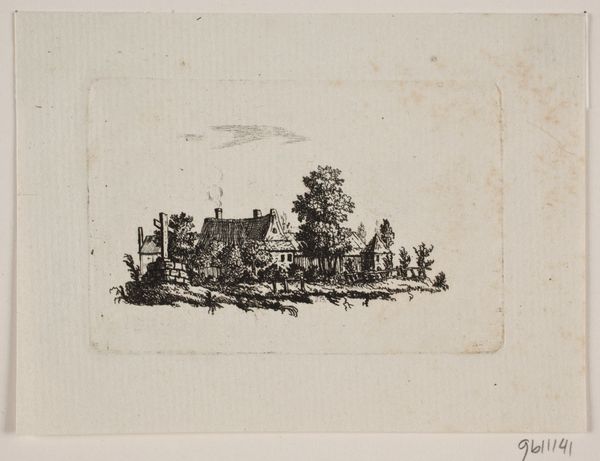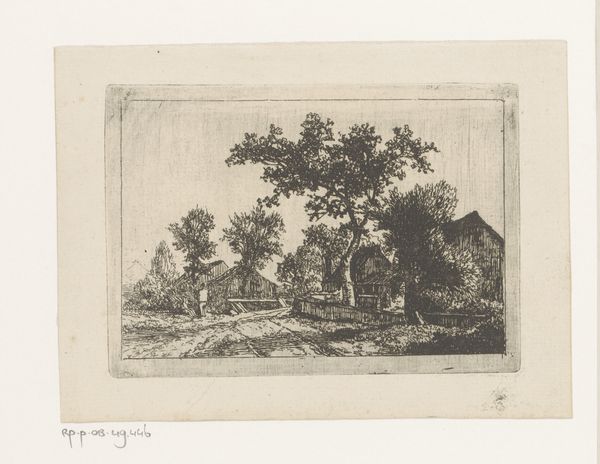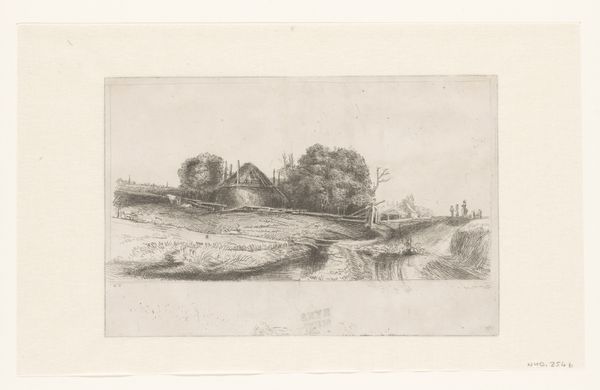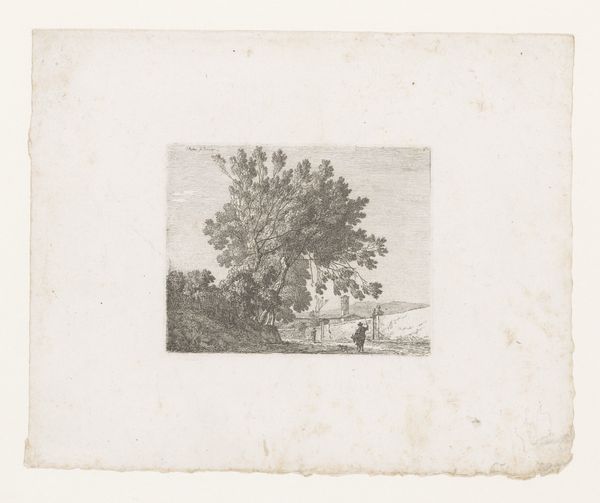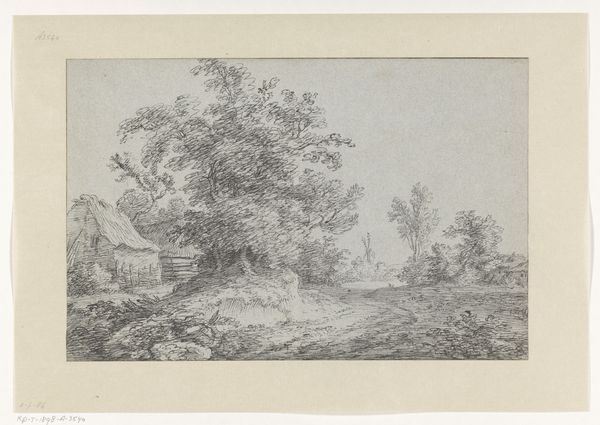
print, etching
# print
#
etching
#
landscape
#
etching
#
genre-painting
#
watercolor
#
realism
Dimensions: height 61 mm, width 86 mm
Copyright: Rijks Museum: Open Domain
Editor: This etching by Ildephonse Stocquart from 1842, titled "Landscape with Man Seated by the Water Near a House", is so intricate! I'm drawn to the details achieved through what seems to be very precise and delicate work. What can you tell me about this piece? Curator: The magic here lies precisely in the etching process. Notice the material reality: a copper plate meticulously worked using acid to bite into its surface, the residue carefully removed, and then, finally, the impression on paper. This is how Stocquart transforms landscape into commodity. Editor: So you’re saying the *process* is as significant as the image itself? Curator: Absolutely. Etchings like this democratized art. While oil paintings were luxury items, prints made images accessible to a wider public, influencing how people consumed art and envisioned the world around them. Think about the implications of a rise of images coinciding with industrial methods of fabrication: art isn’t some separate, elevated category but very deeply entwined with systems of labour, production, and dissemination. Do you think the subject – the quaint house and figure – plays a role in that accessibility? Editor: Yes, it's a domestic scene that likely resonated with everyday people. It feels familiar, not idealized. Considering this was created during the Industrial Revolution, did this piece connect people to their changing surroundings and experiences of landscape and domesticity? Curator: Exactly! Stocquart presents a carefully constructed vision, not of industrial progress, but of an idealized, readily available and reproducible landscape. The "realism" isn’t about reflecting truth, but mediating anxieties surrounding massive societal change. Editor: That really shifts my understanding. It’s more than just a pretty scene; it’s about how art production mirrored and shaped broader social shifts. Curator: Precisely. The beauty is indeed in the details - material and social.
Comments
No comments
Be the first to comment and join the conversation on the ultimate creative platform.

